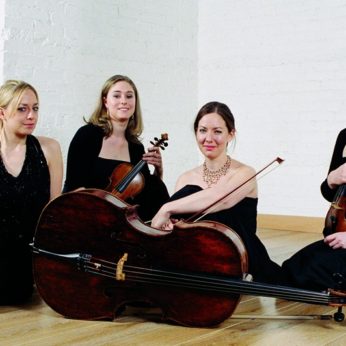The desire to give Haydn’s quartets nicknames is perfectly understandable as there are so many of them. Unusually the bizarre nickname for this quartet comes with a story. The English music publisher, John Bland was on a visit to Esterháza and was brought to Haydn’s apartment when the great man was trying to shave with a blunt blade. The story goes that he cried out to his visitor that he would give one of his best compositions for an English razor. Whereupon the business-like Bland, recognising an opportunity for a profitable trade, rushed to his inn and returned with the coveted instrument and gave it to Haydn, who handed over the quartet manuscript in return. It seems Bland also sent Haydn some more razors when he returned to England. What is less certain is that this F minor Quartet was the actual manuscript handed over as it does not feature in Bland’s publications; scholars now maintain that it was in fact the ‘Lark’ Quartet that earned the composer his supply of English razors.
There are more stories attached to this quartet as it is one of a group of six quartets known as the Tost Quartets. Johann Tost was a member of Haydn’s Esterháza orchestra and was clearly an exceptional musician. He appears to have been rather mysteriously involved in getting publishers in Vienna and Paris to print these quartets although they were not actually dedicated to him. Haydn intriguingly wrote to his Paris publisher as follows: Now I would ask you to tell me candidly just how, and in what fashion, Herr Tost behaved in Paris. Did he have an Amour there? And did he also sell you the 6 quartets, and for what sum? Item, will the quartets and the 2 symphonies soon appear in print? History seems to think that Herr Tost was not entirely honest in his dealings with Haydn. But his virtuosity is not in doubt to judge by the prominence of the first violin in all these quartets.
The slow opening movement of this delightful quartet is in double variation form, that is the two themes are presented then each is varied in turn, where, as an added touch, the tender major-key second theme itself varies the more serious principal minor-key theme. Despite its length there is a case for considering the double variations as but a slow introduction to the Allegro, which is structured exactly like a normal first movement. Parenthically one should perhaps point out that the genre was still in the process of being created so there was at this point perhaps no such thing as normality.
The Allegro itself is a vigorous, monothematic, sonata-form movement peppered with tight little gruppetti that feature extensively in the exciting fugal development section. The Minuet begins as a charming duet between first violin and viola, later joined by cello and then second violin; in the second half the discussion continues without any further reference to the opening theme. The Trio is rather square-cut in comparison. The brilliant presto finale is again monothematic and offered Johann Tost many opportunities to demonstrate his virtuosity.
